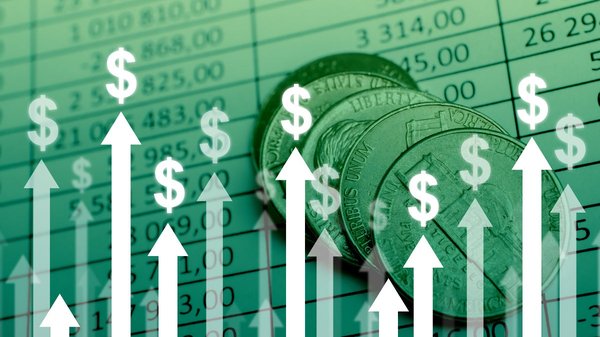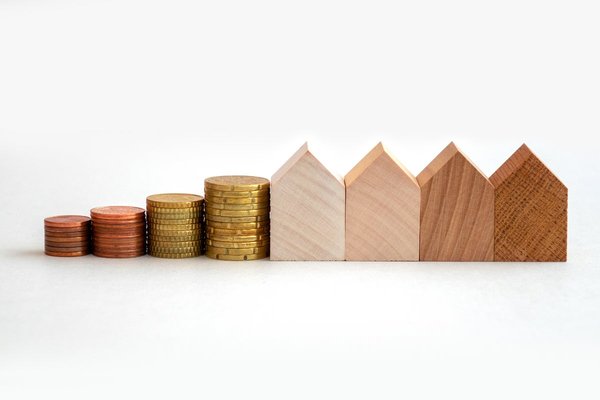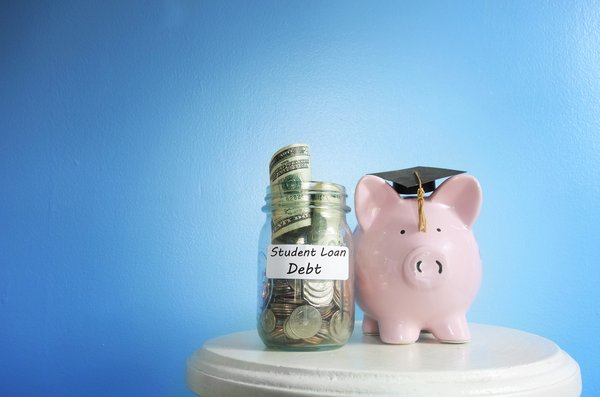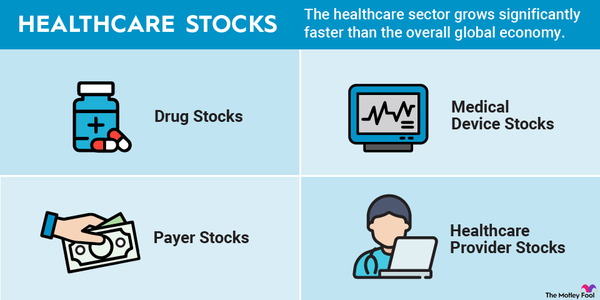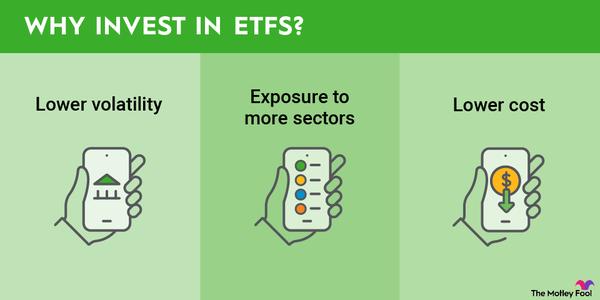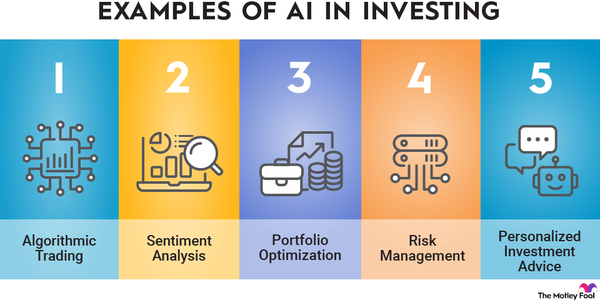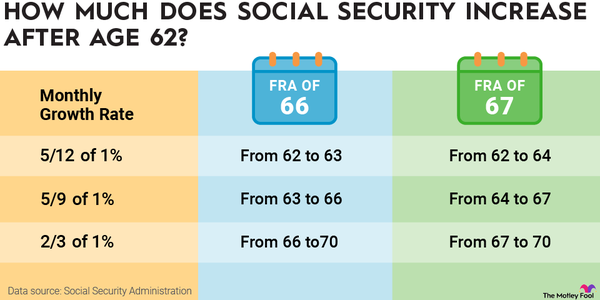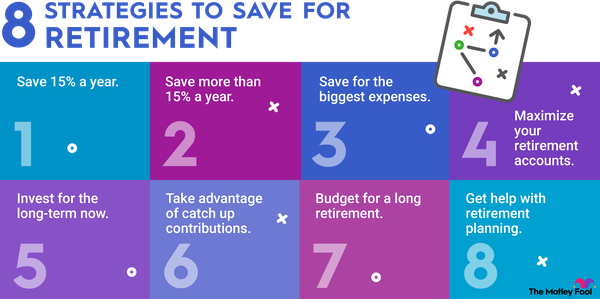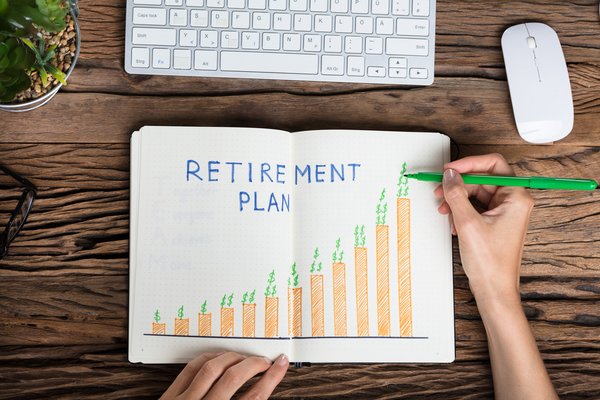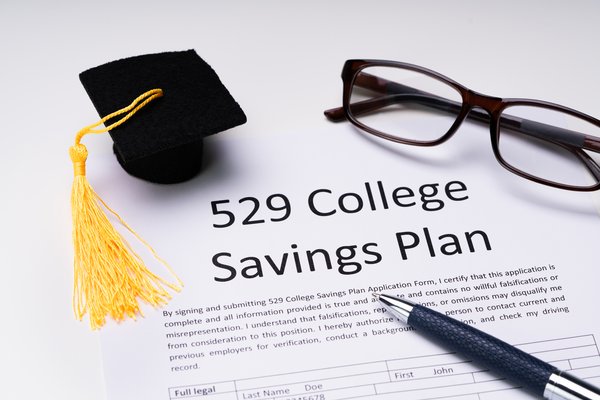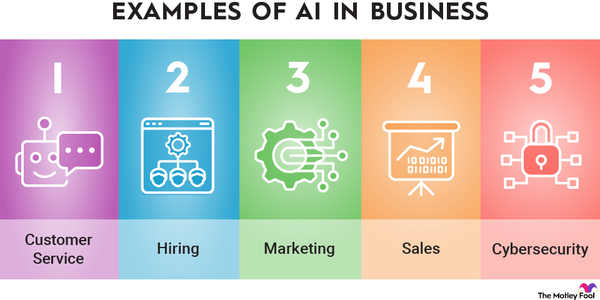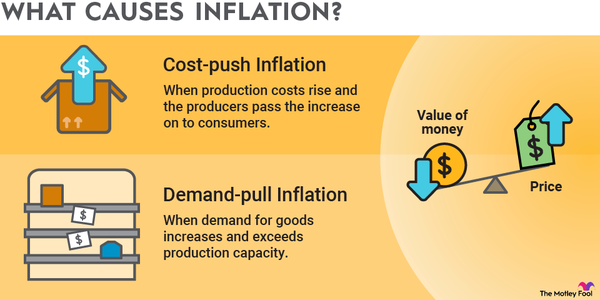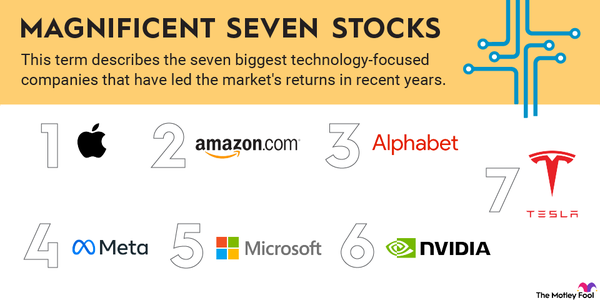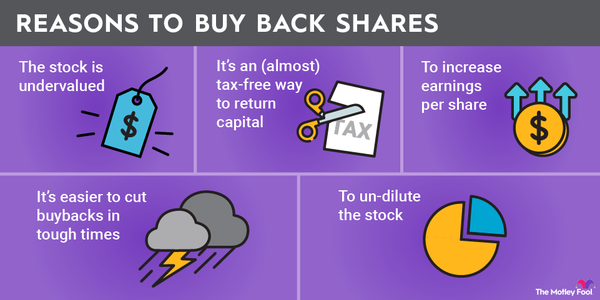Women have traditionally been less likely to invest than men, and over time, this has serious financial repercussions. The median retirement savings is $50,000 for women compared to $157,000 for men, according to a 2024 report by Prudential.

On a positive note, the number of women who are investing their money is growing rapidly. Fidelity reports that 71% of women invest in the stock market, more than ever before, and the younger generations are leading the way. What else is changing with women investors? And how do their portfolios perform? Read on for the most recent data on women and investing.
(And if you're interested in seeing some of the most impressive female investors across a variety of areas, be sure to check out The Motley Fool's Women in Investing awards.)
Demographics
Key findings
Key findings
- As of 2024, 71% of women invest in the stock market, and they invest nearly 10% of their income.
- Investing is most popular with younger women. Reports indicate that 77% of Generation Z women and 74% of millennials invest.
- Women investors get better investing returns than men, with studies finding differences of 0.4% to 1.8%.
What percentage of women own stocks
What percentage of women own stocks?
Historically, only 40% of women have invested, according to the CFA Institute, but recent research shows quite a bit of progress.
A study by Fidelity found that 71% of women invest in the stock market. A 2023 Gallup survey found that 62% of women own stock through either a brokerage account or a retirement account compared to 59% of men.
They're investing a solid amount of their paychecks as well. Fidelity found that women enrolled in a workplace retirement savings account invest 9.8% of their paychecks. Women who invest outside of retirement invest 9.5% of their paychecks, on average.
One of the most promising findings is that investing is particularly popular with younger women. Here's the percentage of women from each generation who invest as of 2024:
- Generation Z: 77%
- Millennials: 74%
- Generation X: 65%
- Baby boomers: 70%
Another positive change is that women are getting started with investing earlier in life. In 2022, Fidelity found that women in the 18-to-35 age group first opened a brokerage account at age 21 on average and a retirement account at 20. Women 36 and older first opened a brokerage account at age 30 on average and a retirement account at 27.
Those extra years of investing make a massive difference. Because of compound interest, investors earn larger returns the longer they invest.
To demonstrate this, let's compare two hypothetical investors. Investor A starts at age 25 and invests $100 per month. Investor B starts at age 35 and invests $200 per month. Both investors earn 8% per year on their portfolios. Here's how much they would have at age 65:
| Investor | Total Contributed | Ending Balance |
|---|---|---|
| Investor A | $48,000 | $335,737 |
| Investor B | $72,000 | $293,630 |
Even though Investor B is putting in twice as much money per month and ends up contributing $24,000 more in total, it's not enough to catch up. That's why starting early is the best decision any investor can make.
How women invest compared to men
How women invest compared to men
Surveys and data from brokers have revealed several key differences in the investing behaviors and performance of men and women. Here's what makes female investors unique.
Women outperform men in investment returns
Multiple studies have found that women outperform men when investing. The only question is by how much.
Women outperformed men by 0.4% in a 2021 analysis of 5 million Fidelity customers over a 10-year period. A University of California, Berkeley study conducted in the 1990s reported a performance difference of nearly 1%. A Warwick Business School analysis of 2,800 investors in the U.K. found that women outperformed men by an impressive 1.8%.
A Wells Fargo study covering December 2012 to 2022 provides more evidence that women do better than men at investing. It reported that women achieved higher returns while taking on less risk than men.
The chart below provides the risk-adjusted returns for single men, single women, joint accounts led by men, and joint accounts led by women. Higher numbers indicate greater returns.
| ACCOUNT TYPE | RISK-ADJUSTED RETURN |
|---|---|
| Female-led joint account | 1.01 |
| Male-led joint account | 0.96 |
| Single female | 0.95 |
| Single male | 0.83 |
Women are more conservative investors
Why have studies consistently found that women get greater returns on their investment portfolios than men? Although there's no single explanation, there are a few notable behaviors that could give female investors an edge. It starts with not taking on too much risk.
Women tend to be more conservative than men when they invest. The table below has data from Fidelity on the differences in how women and men describe their investing style. The percentage of men who consider themselves aggressive investors is twice that of women.
| Investing Approach | Women | Men |
|---|---|---|
| Conservative | 51% | 47% |
| Moderate | 46% | 48% |
| Aggressive | 3% | 6% |
There's also some evidence that women are less likely to hop on investing trends. Meghan Railey, co-founder and CEO of Optas Capital, has written that "While we have found that male clients tend to eagerly invest in the latest asset class everyone is talking about, like cryptocurrency, female clients do not generally jump on the shiny bandwagon."
That is supported by data on the levels of interest male and female investors have shown in cryptocurrency. In June 2021, Gallup found that 11% of male investors owned Bitcoin (CRYPTO:BTC) compared to just 3% of female investors. Crypto has grown more popular since then, but it's still less popular with women. In 2024, Fidelity found that 43% of women who invest outside of retirement buy cryptocurrency compared to 55% of men. Motley Fool Money's 2025 Cryptocurrency Investor Trends Survey found that 52% of male respondents are likely to buy cryptocurrency this year compared to 32% of female respondents.
It's not just cryptocurrency, either. Warwick Business School found in 2018 that female investors were less likely to indulge in "lottery-style" investing, referring to investing in speculative stocks.
Women are less impulsive investors
The most effective investing strategy (and our Foolish investing philosophy) is buying and holding quality stocks for the long haul. Women generally do a better job of that and of avoiding impulsive decisions. Studies have found a few clear examples of this in action.
Women are less likely to change their investing approach during market volatility. Both women and men are most likely to stay the course during volatility (33% of women and 32% of men, according to Fidelity). But men are more likely than women to increase or sell their investments and pull out of the market. However, women are more likely than men to decrease their investments.
| Action During Market Volatility | Women | Men |
|---|---|---|
| Wait it out | 33% | 32% |
| Increase investments | 14% | 29% |
| Sell investments and pull out of the market | 5% | 8% |
| Decrease investments | 8% | 5% |
CBOE Volatility Index (VIX)
Women are less active investors than men. Vanguard found that women log on to their accounts half as often as men and trade 44% less frequently. A University of California, Berkeley study showed that women traded 45% less frequently than men. While men's trading activity reduced their yearly returns by 2.65% per year, women's trading reduced theirs by 1.72%.
Women are more likely to prioritize ESG investing
ESG investing is a form of investing in which investors evaluate a company's environmental, social, and corporate governance. While it has been growing more common in recent years, it's most popular with women.
RBC Wealth Management found that its female clients were almost twice as likely to say it's important that companies they invest in are integrating ESG factors into their policies and decisions. A Cerulli Associates survey found that 52% of women would opt to invest in companies achieving positive social or environmental outcomes compared to 44% of men.
Young women in particular aim to be socially conscious investors. According to BNY Mellon Investment Management:
- 71% of women under 30 and 70% of women in their 30s and 40s prefer to invest in companies that support their personal values.
- 69% of women investors under 30 and 61% in their 30s and 40s say they select investments for their impact on social or environmental issues.
Women aren't as confident in their investing abilities
Even though women do better than men at investing, they're less confident about it. Here's what recent studies have found:
- Only 28% of women are mostly or very comfortable making investment decisions compared to 39% of men, according to Bank of America.
- 72% of women rate their investing knowledge as beginner or nonexistent compared to 53% of men, according to Fidelity.
- 58% of women say that investing intimidates them, according to Fidelity.
Data from FINRA drives home this point. It found that a much larger percentage of men are confident in their investing abilities compared to women.
Perhaps due in part to their lower level of confidence, women are more willing to seek out help with investing. In a 2021 study by Wells Fargo, half of the women surveyed reported working with a financial advisor compared with just under 37% of the men.
| Gender | Assess Themselves as Having a High Level of Investing Knowledge | Feel Comfortable Making Investment Decisions |
|---|---|---|
| Men | 71% | 49% |
| Women | 54% | 34% |
Women score lower than men for investing knowledge
There's a knowledge gap between male and female investors, which could explain why women aren't as confident about investing. It also supports the idea that you don't necessarily need to be the most knowledgeable investor to be a successful investor.
In a 2021 study, FINRA gave men and women a 10-item investor knowledge quiz. Participants who answered five or more questions correctly were considered to have high investing knowledge. Participants who answered fewer than five questions correctly were considered to have low investing knowledge. Here's how the results varied by gender:
| Gender | High Investing Knowledge | Low Investing Knowledge |
|---|---|---|
| Men | 57% | 43% |
| Women | 36% | 64% |
Women have less invested than men, but younger women are closing the gap
Unfortunately, women build significantly less wealth than men on average. A report by Bank of America found that the average 401(k) balance was 50% higher for men than for women in 2023 ($89,000 for men compared to $59,000 for women). The gap is much smaller between millennial men and women (23%) compared to baby boomers (87%) and Generation X (53%).
Vanguard found the same pattern when analyzing the gender gap in IRA balances. The gap is widest with older women and much narrower with younger women.
| Generation | Women's Median IRA Balance as a Percentage of Men's |
|---|---|
| Generation Z | 98% |
| Millennials | 88% |
| Generation X | 81% |
| Baby boomers | 63% |
The gender pay gap is still an issue
The challenges facing female investors
Women who invest deal with several issues that men don't, and that impacts their ability to build wealth. Two of the most prominent are the gender pay gap and the limited number of women in the world of finance.
The gender pay gap limits how much women can invest
While the gender pay gap has received considerable attention in recent years, it's still a serious issue, and progress has been slow.
In 2023, the median female salary was $55,240. That was 83% of the median male salary of $66,790, according to average U.S. income statistics collected from the U.S. Census Bureau.
With such a large gender pay gap, it's no surprise that women accumulate far less wealth than men. The income disparity could lead to a 24% shortfall in women's retirement savings, according to a report by Goldman Sachs.
Women cite inequalities in how they're treated by financial advisors
While progress has been made on the gender investing gap, one area where there hasn't been much positive change is in women's investing experiences. Nearly half (44%) of women report that they face inequalities in investing, according to 2023 research by New York Life, and that number has increased since 2019.
Many women also mentioned difficulties when working with financial advisors. Among female investors:
- 48% said that financial advisors treat women differently.
- 48% said that women feel patronized by financial advisors.
- 40% said that financial advisors are less likely to listen to ideas from a woman.
- 40% said that financial advisors push women out of financial conversations.
All of those numbers have gotten worse from when New York Life conducted market research in 2019.
Another reason women may perceive inequitable treatment from financial advisors is because finance is a male-dominated field. Only about 1 in 7 investment professionals working on active U.S. equity funds from 2008 to 2021 were women, according to Vanguard. Among named portfolio managers, only about 1 in 10 were women.
Related investing topics
Women are closing the gender investing gap
For decades, there has been a significant gender investing gap, but now, there's evidence that it's closing.
More women are investing, they generally make better investing decisions than men, and they're more likely to look for advice from financial advisors. Women are also starting to invest at younger ages.
There's still plenty of work to be done. The gender pay gap limits how much women can save and invest compared to men. Women also lag behind men in investing knowledge even though they do better from a performance standpoint.
But overall, there's plenty of positive data on women and investing. If the current trends continue, women could make the gender investing gap a thing of the past.
Sources
- Bank of America (2023). "BofA Data Finds Men's Average 401(k) Account Balance Exceeds Women's by 50%."
- Barber, Brad M. and Terrance Odean (2001). The Quarterly Journal of Economics. "Boys Will Be Boys: Gender, Overconfidence, and Common Stock Investment."
- BNY Mellon Investment Management (2022). "The Pathway to Inclusive Investment."
- CFA Institute (2019). "The Equality Equation: Three Reasons Why the Gender Investing Gap Is Closing."
- CNBC (2022). "Op-ed: If female investors have any weakness, it’s their mistaken belief that they’re not good investors"
- Fidelity Investments (2021). "2021 Women and Investing Study."
- Fidelity Investments (2022). "Fact Sheet: Fidelity's 2022 Money Moves."
- Fidelity Investments (2023). "Fidelity Investments® Study: Women Tapping Into Their Financial Superpowers to Gain Ground with Their Money."
- Fidelity Investments (2024). "New Research from Fidelity® Shows 71% of Women Own Investments in the Stock Market."
- FINRA (2022). "Understanding Investors in the U.S. In The Face of Technological Innovation."
- Gallup (2021). "Bitcoin Making Inroads With Younger U.S. Investors."
- George Washington University, Global Financial Literacy Excellence Center (2020). "Mind the Gap: Women, Men, and Investment Knowledge."
- Goldman Sachs Asset Management (2024). "Diving Deeper Into the Financial Vortex: Challenges Women Face Saving for Retirement."
- Nationwide (2022). "A step toward building confidence."
- New York Life (2024). "Inspiring Women by Partnering in Their Financial Growth."
- Prudential (2024). "2024 Pulse of the American Retiree Study."
- RBC Wealth Management (2025). "As women gain power, interest in ESG investing grows."
- Vanguard (2020). "The same but different: Gender and investor behavior in Vanguard retail accounts."
- Vanguard (2022). "Comparing the saving behaviors of women and men in DC plans."
- Vanguard (2022). "Gender diversity and U.S. active equity fund performance."
- Vanguard (2024). "Closing the gender gap in IRA balances."
- Warwick Business School (2018). "Are women better investors than men?"
- Wells Fargo (2023). "Women and Investing."
















